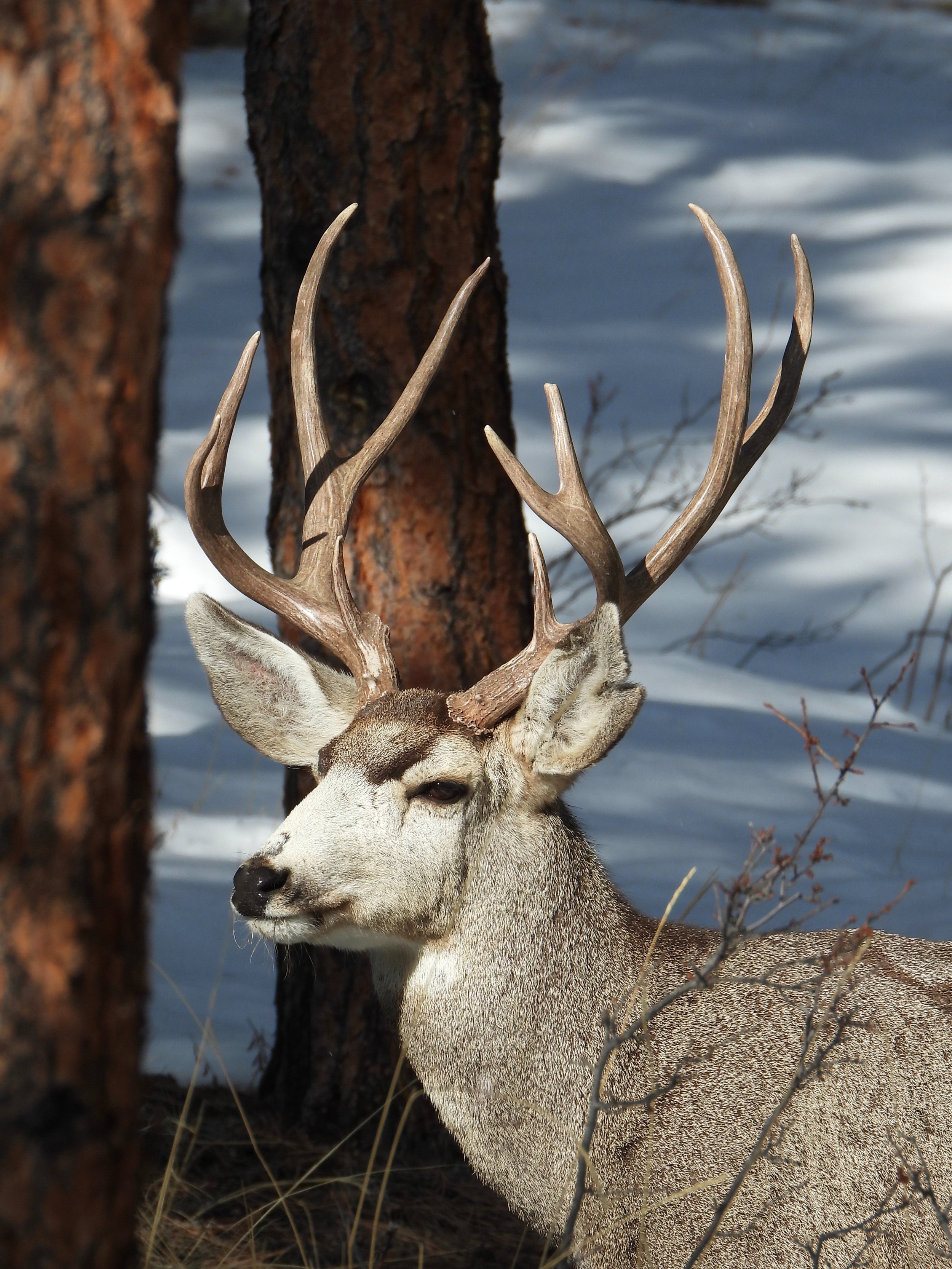Infrastructure can protect Central Oregon's Mule Deer
Mule deer group in brush: Mark Thornhoff
Safe Crossings for Mule Deer
Mule deer (Odocoileus hemionus) are an iconic Central Oregon species. They spend the year traversing our region’s geography, spending summers in the densely wooded high mountains and winters in the sparse sagebrush of the high desert. Unfortunately, the cumulative effects of human activities on both private and public land in recent years have caused mule deer numbers to sharply decline.
A recent report from the Oregon Department of Fish and Wildlife reveals that reports that mule deer populations in Deschutes County declined a terrifying 56% since 2004. Mule deer need our help before it's too late.
Making progress with infrastructure that works
There is the potential for good news, too, in that mule deer populations have the natural capacity in terms of fecundity to bounce back if given reasonable protections. We must preserve the unfragmented habitat remaining, including forage and cover in their summer and winter ranges, as well as maintain the connections between them in the form of intact corridors for migration.
Wildlife Crossing on Highway 97, south of Bend, near Sunriver, Oregon: Oregon Department of Fish and Wildlife
The most significant barrier to mule deer movement across the landscape is highways. However, Wildlife crossings, in the form of highway underpasses and overpasses, have been shown to be highly effective in reducing the wildlife/vehicle collisions that are a major source of mule deer mortality. For example, the three recently completed underpasses for wildlife below Highway 97 south of Bend have decreased these collisions on that stretch of road by around 90%.
Though wildlife crossings and the miles of fencing that funnel mule deer toward them can be expensive, the benefits from increased highway safety and savings from decreased property damage more than justify the search for additional locations for such projects. By using telemetry data from radio-collared deer, combined with data on the hotspots of wildlife/vehicle collisions, we can find good locations for future crossing projects.
What can you do?
Photo by Christine Greene
While we work towards safer infrastructure for mule deer, there are a few things we can do ourselves.
We can consistently employ mindful driving behaviors that reduce collisions with wildlife.
Here are some simple things you can do:
Avoid distractions while driving.
Slow down, particularly in marked deer-crossing zones and at dawn and dusk when mule deer are on the move.
Pay increased attention to your peripheral visual field.
Be aware of seasonal upticks in risks from mule deer migration and the fall rut. (Deer can be distracted, too!)
Support Wildlife Conservation
LandWatch’s Wild Lands Program works to ensure Oregon’s wild lands are protected to support biological diversity and critical wildlife habitat. Together, we can ensure our region remains one where we can live as good neighbors to our wildlife by recognizing their homes on this landscape.



